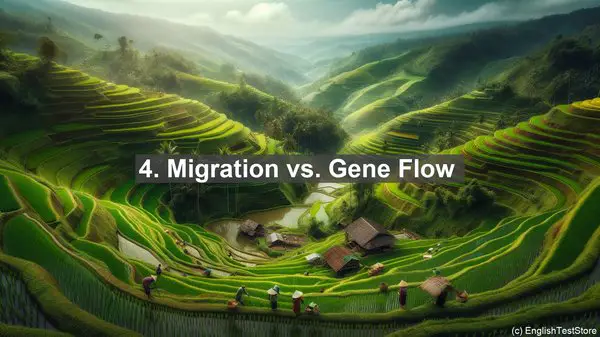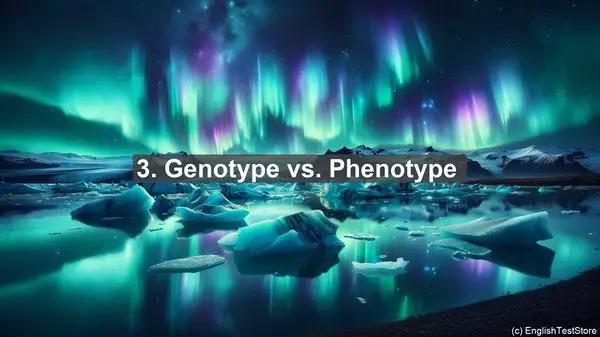Introduction
Welcome to today’s lesson on population genetics. In this lesson, we’ll be discussing the top 10 commonly confused words in this field. Understanding these terms is crucial for a solid foundation in population genetics. So, let’s dive right in!
1. Allele vs. Gene
The terms ‘allele’ and ‘gene’ are often used interchangeably, but they have distinct meanings. A gene is a segment of DNA that determines a specific trait, while an allele is a variant of that gene. In simpler terms, a gene is like a recipe, and alleles are the different ingredients that can be used to make the dish.
2. Heterozygous vs. Homozygous
These terms refer to the presence of different or identical alleles for a particular gene. Heterozygous individuals have two different alleles, while homozygous individuals have two identical alleles. It’s like having a pair of shoes – they can either be the same (homozygous) or different (heterozygous).

3. Genotype vs. Phenotype
Genotype refers to the genetic makeup of an individual, while phenotype refers to the observable traits. Think of it as a blueprint (genotype) and the actual building (phenotype). The blueprint may contain the instructions for a particular feature, but the final building can vary depending on other factors.
4. Migration vs. Gene Flow
Migration and gene flow both involve the movement of individuals between populations. However, migration refers to the physical movement, while gene flow specifically focuses on the transfer of genetic material. It’s like people moving to a new city (migration) and then actively participating in the local culture (gene flow).
5. Genetic Drift vs. Natural Selection
Genetic drift and natural selection are two mechanisms that can lead to changes in a population’s gene pool. Genetic drift is a random process, like flipping a coin, while natural selection is a non-random process, like a skilled archer hitting a target. Both can shape a population’s genetic makeup, but in different ways.
6. Founder Effect vs. Bottleneck Effect
Both the founder effect and bottleneck effect are examples of genetic drift. The founder effect occurs when a small group of individuals establishes a new population, while the bottleneck effect happens when a population undergoes a drastic reduction in size. It’s like starting a new club (founder effect) or losing most of the members (bottleneck effect).
7. Microevolution vs. Macroevolution
Microevolution and macroevolution are terms used to describe different scales of evolutionary change. Microevolution refers to small-scale changes within a population, like the frequency of an allele changing over time. Macroevolution, on the other hand, involves larger-scale changes, such as the formation of new species.
8. Inbreeding vs. Outbreeding
Inbreeding and outbreeding are related to the mating patterns within a population. Inbreeding occurs when individuals with similar genetic backgrounds mate, while outbreeding involves mating between individuals with different genetic backgrounds. It’s like a small family reunion (inbreeding) versus a large international gathering (outbreeding).
9. Hardy-Weinberg Equilibrium
The Hardy-Weinberg equilibrium is a fundamental concept in population genetics. It describes a theoretical population in which allele frequencies remain constant over generations. Any deviation from this equilibrium indicates that evolutionary forces are at play, such as natural selection or genetic drift.
10. Molecular Clock
The molecular clock is a tool used to estimate the timing of evolutionary events. It’s based on the idea that genetic mutations occur at a relatively constant rate. By comparing the number of differences in DNA sequences between species, scientists can infer how long ago they diverged from a common ancestor.

